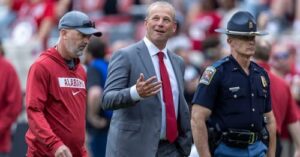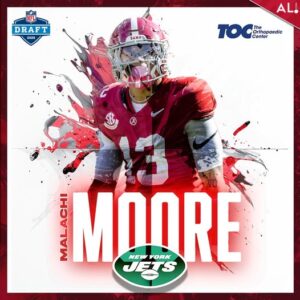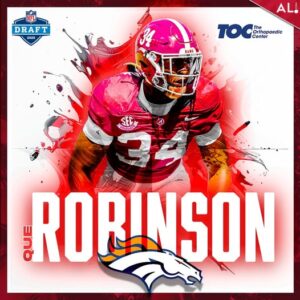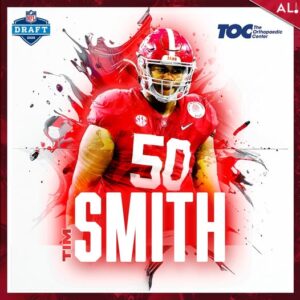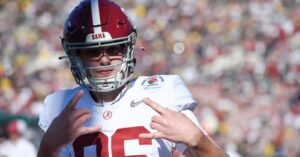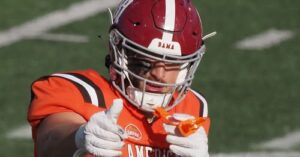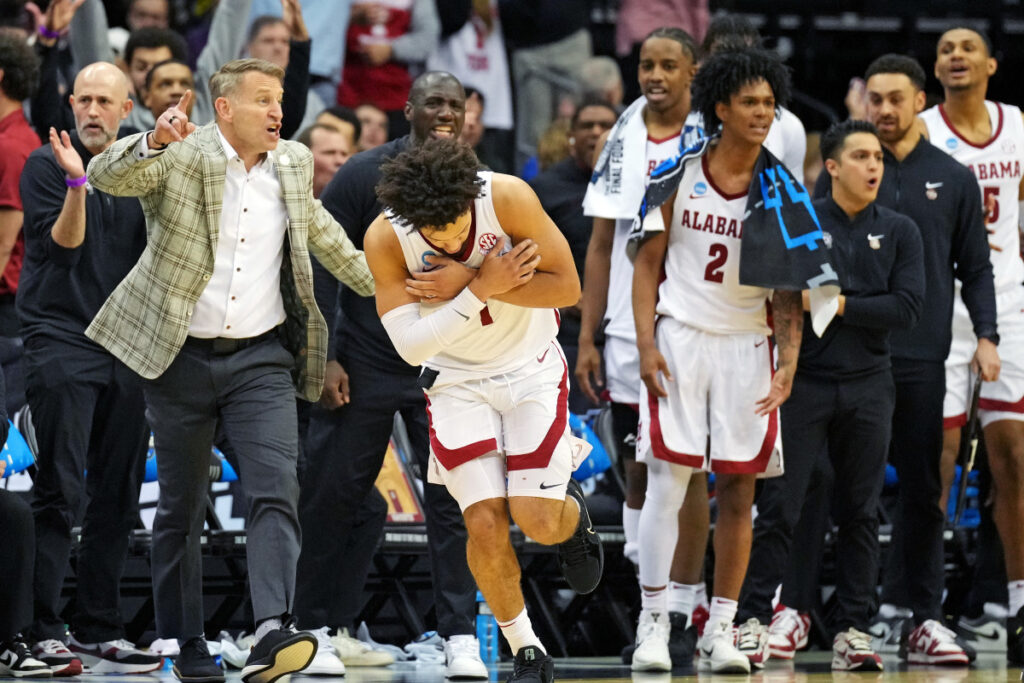
Alabama’s Mark Sears Receives Disappointing NBA Draft Projection Despite Breakout Season
Mark Sears has spent the past two years crafting his legacy at the University of Alabama, evolving from a solid contributor into one of college basketball’s most electrifying guards. With a smooth shooting stroke, elite burst off the dribble, and a competitive fire that fueled Alabama’s deepest NCAA Tournament run in program history, Sears seemed destined to ride that wave of momentum into the NBA. But as the 2025 NBA Draft inches closer, the outlook on Sears’ professional future has taken a disheartening turn.
Despite being one of the most productive and consistent players in college basketball this past season, Sears is widely projected as a second-round pick—or worse. In some mock drafts, he’s been left out entirely. It’s a bitter pill to swallow for a player who, by all statistical and eye-test measures, looked the part of an NBA-ready guard. The drop in projections isn’t necessarily a reflection of Sears’ performance, but rather the cold, calculating world of NBA scouting where potential often outweighs proven production.
Sears averaged 21.5 points, 4.2 rebounds, and 4.0 assists per game while shooting nearly 44% from three-point range and 50% from the field overall. He was the offensive heartbeat of Nate Oats’ high-octane system, showcasing a versatile offensive bag that included deep-range pull-ups, fearless drives into traffic, and the poise to create offense late in the shot clock. His performances in March alone should’ve moved the needle—none bigger than his 23-point effort against North Carolina in the Sweet 16 or his 23-point showing in the Final Four.
But in the NBA world, scouts are looking for traits that translate seamlessly to the next level, and that’s where the skepticism around Sears begins to mount. At 6-foot-1, he’s undersized by NBA standards for a lead guard. His wingspan doesn’t scream defensive upside. He’s not a dynamic athlete in the mold of Ja Morant or De’Aaron Fox, and he doesn’t possess the positional size of combo guards like Anthony Black or Jalen Suggs. In short, the very things that made Sears a college star—the nuance, the skill, the experience—are overshadowed by the league’s obsession with size, length, and athletic ceiling.
This isn’t a new phenomenon. College basketball has long served as a theater for players to prove their worth, but the NBA often places a premium on what a player could be, not what he already is. That hurts seniors like Sears, who at 23 years old is considered an older prospect. Many front offices are reluctant to invest a first-round pick in a player they view as close to his developmental ceiling. It’s a frustrating paradox: players like Sears are penalized for being productive and polished because they don’t fit the mold of a “high-upside” pick.
Still, the disconnect between Sears’ draft stock and his résumé is difficult to ignore. His decision-making improved drastically from his first year at Alabama to this past season. Turnovers were down, his assist-to-turnover ratio rose, and his shot selection became a strength. He displayed an uncanny knack for clutch shot-making and leadership, frequently putting the Crimson Tide on his back when games hung in the balance. For a team that made it to the Final Four for the first time in school history, Sears was both engine and anchor.
It wasn’t just the volume of points he produced—it was how and when he delivered them. Whether it was dagger threes, isolation step-backs, or crafty floaters in the lane, Sears did it all while being the focal point of every opponent’s game plan. His gravity on the court opened up opportunities for teammates, and his defensive effort—while not elite—was far from a liability. He played with toughness, took charges, and held his own against bigger guards.
Yet, for all that, NBA evaluators remain wary. Scouts point to his limited vertical explosiveness as a concern when finishing against rim protectors. His playmaking, while improved, isn’t on par with primary initiators at the NBA level. And defensively, the questions about his ability to guard bigger, more athletic guards persist. In pre-draft workouts and interviews, Sears will have to work double time to prove that his floor general qualities, scoring touch, and basketball IQ can outweigh the limitations that may come with his frame.
There’s also the reality of the draft itself. The 2025 class is particularly deep with guards—many of whom are either international prospects with tantalizing upside or freshmen who entered the college ranks with top-10 pedigree. That leaves players like Sears in a tough spot: highly capable, but without a standout physical trait to vault them above the competition. The same traits that allowed Sears to dominate in college—craft, experience, and intangibles—don’t always move the needle in war rooms dominated by projection models and long-term developmental blueprints.
Even so, there is hope. The NBA is full of players who slipped through the cracks only to carve out meaningful roles once they got a foot in the door. Jalen Brunson, Fred VanVleet, and Malcolm Brogdon all fell in the draft because of concerns over size or athleticism. Yet all three became key contributors—and in some cases, All-Stars—because of their skill, poise, and relentless work ethic. Sears may never have the jaw-dropping physical tools of a lottery pick, but he’s got something that can’t be measured on a wingspan chart or a vertical leap test: he knows how to win.
That’s what Alabama fans will remember most. Sears didn’t just put up numbers; he changed the culture. He made the Crimson Tide relevant on the national stage, proving that Alabama basketball isn’t just a one-hit wonder. Under his leadership, the program reached unprecedented heights, and his impact will be felt long after his departure. He was a consummate competitor, a vocal leader, and a relentless worker who turned doubters into believers—traits that may not earn you a lottery slot, but often lead to long careers in the league.
For now, Sears will continue to train, interview, and hope for the right opportunity. His agent will work the phones. He’ll run through drills in front of scouts, run through questions in front of executives, and try to convince someone—anyone—that his game is worth investing in. He doesn’t need to hear his name in the top 30 to prove his worth. He just needs one team to believe. And if they do, they’ll be getting a mature, NBA-ready guard who knows how to handle adversity, who knows how to perform under pressure, and who knows how to lead.
The draft process may be humbling, but it won’t define Mark Sears. Whether he hears his name called early, late, or not at all, he’s already proven that he belongs in the conversation. The path to the NBA is never linear, and the road ahead may be rocky. But if his time at Alabama taught us anything, it’s that Sears thrives when the odds are stacked against him.
Maybe he won’t walk across the stage in a suit and shake Adam Silver’s hand. Maybe his name won’t be trending on draft night. But don’t be surprised when, a year or two from now, Mark Sears is not just surviving in the league—but thriving in it. And when that day comes, those who passed on him will have to reckon with the truth: sometimes, the safest pick is the one with the most heart
